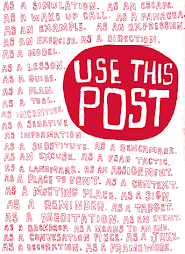4/3/13 6:56 AM Reading Feeding the Creative Brain: From Curiosity to Innovation by @robinfogartyp21.org/tools-and-reso… Through her work as a neuroscientist and neurosurgeon, Willis learned about the inner workings of the human brain. The more she understood the science behind learning and cognition, the more curious she became about the outer workings of the brain with teaching and cognition. “What is it that teachers do that spark that natural curiosity to know?” With that idea driving her, she left her practice, returned to the university for a teaching degree, and worked as a teacher for 11 years. |
The results of her dichotomous work describe a neurological phenomenon that occurs inherently as a function of the human mind. From untamed curiosity, an unending flow of questions, and simple, simmering investigations, the learner seeks validation of emerging ideas. Ultimately, this is nature’s circuit for creating connections and sparking innovation and invention. To examine more closely the processing elements of the naturally curious and creative mind, Willis delineates the process scientifically, and then translates that neural process into educational terms that define the creative process as illustrated in Figure 1.
curious.. if the brains plasticity has skewed our research on naturalness.. in regard to the brain.. and curiosity.
Fig 1: Nurturing Natural Curiosity
NOVELTY - Discern differences in environment that spark emotional curiosity
CURIOSITY - The motivating desire to “want to know”
HYPOTHESIS - Impending questions that frame plausible and implausible answers
INVESTIGATON - Method of searching for conclusive evidence to prove hypothesis
VALIDATION - Findings that are significant and irrefutable
_________
Willis explains about Darwin’s Theory of Survival of the Fittest (1949) and how that natural instinct for “noticing something different on the horizon”, ignites the Reticular Activating System (RAS) that signals an internal alarm. At this moment, the amygdala, the center of emotions, kicks in, and the body reacts viscerally to the circumstances. Willis adds, that this is the emotional connection that excites the learner and readies them for input. It is the kind of ignition she suggests teacher harness to create a ready state or mindset that invites learning as it passes through the Pre-Frontal Lobes (PFL) This short term memory can then travel through the hippocampus and into long term memory.
It is the kind of ignition she suggests teacher harness to create a ready state or mindset that invites learning as it passes through the Pre-Frontal Lobes (PFL) This short term memory can then travel through the hippocampus and into long term memory.
going way off here..
but the instant i read that first sentence.. I thought of rushkoff
One example she cites is putting a radish on every desk in her seventh grade classroom. As they enter the room, students are all abuzz about the “novelty” of the radish and start questioning her about what it’s all about. This is the desired brain state of receptive learners. They have what the Caines’ (2011) call, a “relaxed alertness”. There is some emotional connection at work. At some point she reveals the point of the radish.
Once the novelty triggers their curiosity, students want to investigate, explore, and experiment. They are eager to know if their guesses are on target; if their predictions are right. They want to know, to validate their thinking, to see if they are right or wrong. And that is exactly where teachers want them to be . . . seeking and searching for the answers.
curious.. what might happen.. if we did this with no agenda..
Watching two toddlers on Waikiki Beach, stand at the edge of the water and run up onto the beach, squealing with delight every time the repeating waves approach them, is remarkable in itself, but when they continue this activity for well over an hour, the power of this natural curiosity is crystallized. It is a mysterious key that unlocks the mind for speculation, investigation and validation. It is that mysterious key that teachers can use to open the creative channels for student-initiated learning.
indeed.. this is one reason why curiosity seems to be that leveling piece..
but does it compromise it.. adulter-ize it (perfect word here) when we front/side/back end it with an agenda.. (other than how to further facilitate curiosity or a curiosity)
Constantly change the mechanics (and the antics) of the classroom to keep kids on their toes, ever-ready for that teachable moment.
kids .. adults.. who ... on their toes..?
In closing, it seems logical that if educators covet the natural curiosity of students to engage, guess, investigate and validate their ideas, these are the engaging strategies that propel student-directed projects and authentic learning experiences. At the same time, students develop a sense of intense ownership over their own learning.
this is where I am that jerk..
how do we call this authentic and self directed..
if we really believed this created intense ownership... we would need no more gimmicks.. strategies..
just our intense authenticity to give up the power.. agenda... sense of control..
and... fear... of getting in trouble .. some how.. for that (much desired/needed) giving up ness
 Pasi Sahlberg (@pasi_sahlberg)
Pasi Sahlberg (@pasi_sahlberg)4/3/13 6:58 AM
OECD's view to Trends Shaping Education 2013oecd.org/edu/ceri/trend…
 Ben Grey (
Ben Grey (



































